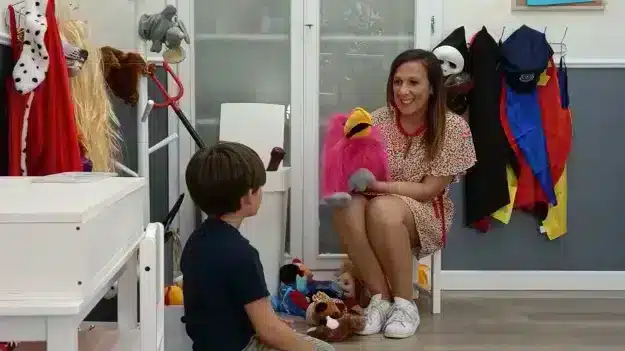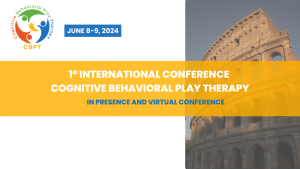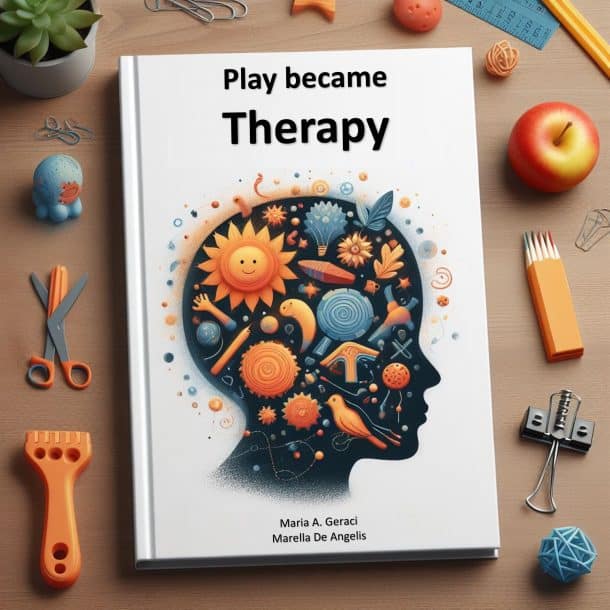What is Cognitive Behavioral Play Therapy?
Cognitive-Behavioral Play Therapy (CBPT) is an evidence-based approach that combines the principles of cognitive-behavioral therapy (CBT) with the techniques of play therapy. CBPT is designed to help children and adolescents cope with various emotional and behavioral problems, such as anxiety, depression, aggression, trauma, abuse, and bereavement.
play therapists child feels
CBPT uses play as a natural and developmentally appropriate way for children to express themselves, learn new skills, and solve problems. Play also allows children to distance themselves from painful or difficult topics and address them indirectly. Through play, children can explore and modify their thoughts, feelings, and behaviors in a safe and supportive environment.
The CBPT Research Center is a leading institution in the field of psychological and psychotherapeutic interventions for children and adolescents. The center offers training, consultation, and research on CBPT and related topics. The center also provides clinical services for children and families who need CBPT.
If you are interested in learning more about CBPT and how it can benefit your child or your practice, read on to find out how the intervention is organized and what tools are used in CBPT.

How is the intervention organized?
The intervention consists of four main phases: meeting with parents, assessment of the child, play therapy, and end of therapy. Each phase has a specific purpose and goal, and the duration and frequency of the sessions may vary depending on the needs of the child and the family.
1. Meeting with parents: the first phase of play therapy
In this phase, the therapist meets with the parents without the child, to gather information about the child’s history, situation, and needs. The therapist also asks the parents to complete some questionnaires to measure the severity and impact of the child’s problems. In addition, the therapist explains how the therapy is conducted and how the parents can help the child, because parental involvement is very important for the success of the therapy.
2. Assessment of the child: the second phase of play therapy
In this phase, the therapist observes and plays with the child to understand the child’s strengths and weaknesses, as well as the child’s cognitive, emotional, and behavioral functioning. These sessions are important to determine whether play therapy is suitable for the child, based on the child’s developmental level and readiness for change.
3. Play therapy: the third phase of play therapy
In this phase, the therapist makes a customized therapy plan, based on the goals that he or she sets together with the parents and the child. The therapy aims to help the child to be calmer, more confident, and more competent.
It also teaches the child strategies to think and act better in everyday life and to cope with challenging situations. It also helps the child to deal with difficult emotions and experiences. The therapist uses different techniques, which are proven to work, and adapts them to the play context to make the therapy more fun and engaging for the child.
4. End of therapy: the fourth phase of play therapy
In this phase, the therapist prepares the child and the family for the end of therapy by helping them manage their feelings at this time and maintain the results they have achieved. The therapist also evaluates the effectiveness of the therapy with some follow-up questionnaires and interviews after 6 and 12 months after the end of therapy.
What tools does CBPT use?
CBPT uses a variety of tools and materials to facilitate the communication and interaction between the therapist and the child. These tools include puppets, stuffed animals, books, art supplies, and other toys. These tools act as models that support the verbalization of problem-solving skills or possible solutions to a problem similar to the child’s. They also allow the child to contribute freely and creatively during the session and to express his or her experiences effectively.
Some of the tools used in CBPT are:
- Puppets are objects that look like people, animals, or make-believe characters. They move and talk when a therapist or child controls them. There are different types of puppets, such as finger puppets, sock puppets, or hand puppets. Puppets can be used to role-play scenarios, model behaviors, or elicit emotions and thoughts from the child.
- Storytelling: Storytelling is the production and narration of stories. Stories are models that teach values and skills and can provide adaptive alternatives to problems. The therapist, by listening to the stories of the child, can gain insight into the child’s difficulties, frustrations, and aspects of his or her life that the child has difficulty revealing openly. There are many variations of storytelling, such as child storytelling, therapist storytelling, and reciprocal storytelling.
- Expressive arts: Expressive arts are a process of self-discovery that occurs through any form of art stimulated by an emotional experience. These arts involve the use of artistic tools and materials, such as drawing, collage, painting, sculpture, clay and play-doh modeling. These represent an alternative and non-threatening mode of expression compared to talking openly about emotions, thoughts, and personal events.
How can you learn more about CBPT?
If you are a psychologist who wants to learn more about CBPT and how to apply it in your practice, you can visit the CBPT Research Center website here. You will find information about the training courses, the consultation services, and the research projects that the center offers. You can also contact the center by email or phone to ask any questions or request more information.
If you are a parent who wants to know more about CBPT and how it can help your child, you can also visit the CBPT Research Center website here. You will find information about the clinical services, the fees, and the locations of the center. You can also read some articles and testimonials from other parents and children who have benefited from CBPT. You can also contact the center by email or phone to schedule an appointment or request more information.
CBPT is a powerful and effective way to help children and adolescents overcome their problems and improve their well-being. Through play, children can learn new skills, change their thoughts and behaviors, and express their emotions. CBPT is also fun and enjoyable for both the therapist and the child, making the therapy process more engaging and rewarding.
If you are interested in CBPT, don’t hesitate to contact the CBPT Research Center today and discover how play can make a difference in your child’s life.
SETTING AND MATERIALS
CBPT is usually conducted in a playroom or office equipped ideally with a variety of toys and materials. Among these are used: Puppets, Papers of different colors, Markers/crayons, Dollhouse, Family set of figures, Books on many different topics, Toy cars, games to build therapeutic alliance, Clay and Play dough, Legos or other building supplies, Posters and stickers and feeling blocks, Dry erase board ecc.
The child intervention can sometimes take place outside the playroom especially for those children with specific anxieties or phobias that are then treated in vivo.


